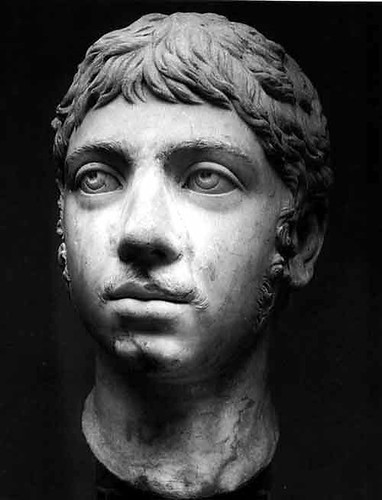“I love this word decadence, all shimmering in purple and gold. It suggests the subtle thoughts of ultimate civilization, a high literary culture, a soul capable of intense pleasures. It throws off bursts of fire and the sparkle of precious stones. It is redolent of the rouge of courtesans, the games of the circus, the panting of the gladiators, the spring of wild beasts, the consuming in flames of races exhausted by their capacity for sensation, as the tramp of an invading army sounds.” — Paul Verlaine, Les Poètes maudits (1884)
“Heliogabalus was a remarkable example of psychopathia sexualis; but in his age there were no Krafft-Ebings to submit his case to scientific observation,” said John Stuart Hay in 1911 in The Amazing Emperor Heliogabalus. Heliogabalus, or Elagabalus as he is also called, is indeed a prime example in the category of Roman decadence, along with other notorious emperors such as Tiberius, Caligula, Claudius and Nero.
Keywords in the history of Roman decadence are inbreeding, bacchanalia, orgies, vomitoria, Great Fire of Rome, gladiators and pederasty.
The classic account of Roman decadence is Edward Gibbon‘s The History of the Decline and Fall of the Roman Empire, published in six volumes between 1776 and 1788, a book that was instantly put on the Index Librorum Prohibitorum. The history of Roman decadence is a necessarily a hybrid mix of truth and fact, but is interesting to note that the view Europe had of Roman antiquity during the Renaissance was that of an highbrow ideal. It wasn’t perhaps — although the existence of Latin profanity was already known to Antiquity scholars – until the excavations of Pompeii and we found the erotic art in Pompeii and Herculaneum in the second half of the 18th century that our view of the Romans started to change. This gave rise to the very first secret museum, the Secret Museum of Naples.
Back to Heliogabalus.
Two years ago in Amsterdam, I saw a pleasant man who served us in a bar while we were having dinner. His face struck me as perverse. How can someone have a perverse face? Is the nature of your character readable on your face? Go ask the physiognomists, phrenologists, pathognomists and characterologists and they will answer “yes“. Their sciences are long out of fashion and definitely politically incorrect, but I concur, without of course, casting a judgment. You need only look at the face of Heliogabalus.


Did you read Artaud’s 1934 essay on Heliogabalus: ‘Héliogabale, ou l’Anarchiste Couronné’?
I was aware of it, but haven’t read it, I’ve included it on my wiki here.
You’ve read it?
J
Yes I have. It’s one of his more interesting works: one of those rare pro-Heliogabalus works, in which his decadent quircks are regarded as the mark on an inreverrent libertarian, an anarchist.
Purple and gold are two of the Mardi Gras colors. The other is green.
According to tradition, purple represents justice; green, faith; gold, power.
According to the street, they represent sexual frustration, envy and avarice, respectively.
I’m sure there are other interpretations.
I love color symbolism, thanks for the heads up at your blog, too.
J